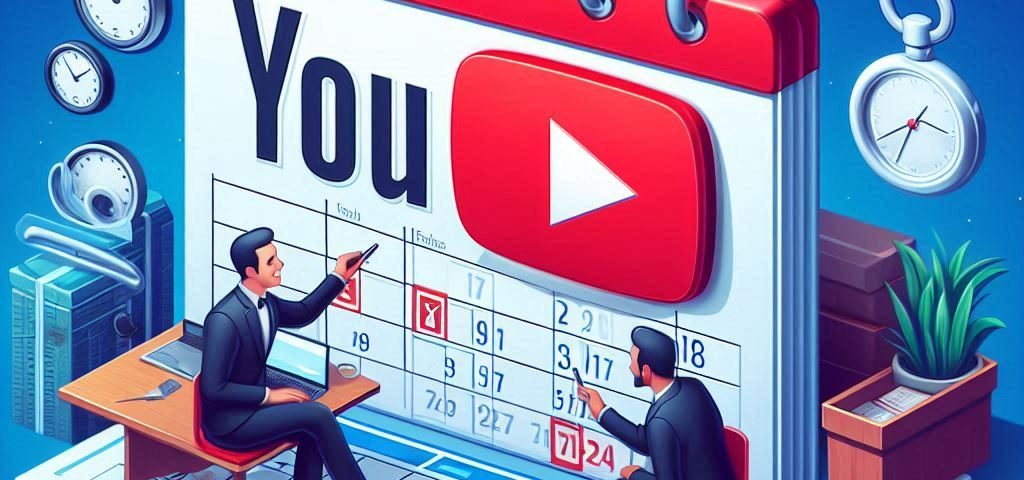Creating a YouTube content calendar is crucial for success in 2024. Here we will walk you through the steps of how to plan your YouTube content calendar strategy effectively. By following these steps, you can ensure that your channel stays consistent, relevant, and engaging.
Why Do You Need a YouTube Content Calendar?
A content calendar is a tool that helps you organize and schedule your videos. It ensures that you post regularly and stay on track with your content goals. This consistency is crucial for attracting and retaining YouTube subscribers. Here’s why it’s essential:
- Planning Ahead: It allows you to plan your content in advance, reducing stress and last-minute rushes.
- Content Variety: A calendar helps you diversify your content, keeping your channel interesting.
- Better Collaboration: If you work with a team, a calendar ensures everyone is on the same page.
Step 1: Define Your Content Goals
Before you start planning, define your goals. Here are some common goals:
- Increase Subscribers: Growing your audience is a common goal.
- Boost Engagement: Getting more likes, comments, and shares.
- Monetization: Earning money through ads, sponsorships, or products.
- Brand Awareness: Promoting your brand or business.
Once you know your goals, you can tailor your content to meet them.
Step 2: Conduct Keyword Research
Start learning how to Plan Your YouTube Content Calendar starts with keyword research, which is essential for planning your content. It helps you discover what topics are popular and relevant. Use tools like Google Keyword Planner, Ahrefs, or TubeBuddy to find keywords related to your niche.
Step 3: Brainstorm Content Ideas
Now that you have your goals and keywords, it’s time to brainstorm content ideas. Here are some tips:
- Look at Trends: See what’s currently trending in your niche.
- Check Competitors: Look at what successful channels in your niche are doing.
- Ask Your Audience: Use polls or social media to ask your audience what they want to see.
Make a list of potential video ideas and categorize them by type, such as tutorials, reviews, or vlogs.
Step 4: Create a Content Schedule
Use a calendar tool like Google Calendar, Trello, or a physical planner when learning how to plan your YouTube content calendar. Mark down the dates for each video. Be realistic about your time and resources. If you’re new, start with one video a week and gradually increase.
For each video, include the following details:
- Title: The name of the video.
- Description: A brief overview of the content.
- Keywords: Relevant keywords.
- Posting Date: When the video will go live.
Step 5: Plan Your Video Production
Now that you have a schedule, plan your video production. This includes:
- Scripting: Write a script or outline for your video.
- Filming: Schedule time to shoot the video.
- Editing: Set aside time for editing.
Remember to stay consistent with your branding throughout the video production process.
Step 6: Optimize for SEO
Here’s how to optimize your videos:
- Use Keywords: Include your main keywords, like “How to Plan Your YouTube Content Calendar,” in the title, description, and tags.
- Create Engaging Thumbnails: Your thumbnail should be eye-catching and relevant to the content.
- Write a Strong Description: Include a brief description of the video, using your main keywords.
- Add Tags: Use relevant tags to help YouTube categorize your video.
By optimizing for SEO, you increase your chances of ranking higher in search results.
Step 7: Promote Your Videos
Once your video is live, promote it across different platforms. Here’s how:
- Social Media: Share your video on Facebook, Twitter, Instagram, and other platforms.
- Email Newsletter: Include the video in your newsletter.
- YouTube Community Tab: Engage with your audience by posting updates and teasers.
Step 8: Monitor and Analyze Performance
After posting your videos, monitor their performance. Use YouTube Analytics to track:
- Views: The number of individuals who saw your video.
- Watch Time: How much time people spent watching the clip you created.
- Subscriber Growth: the amount of new members you attract.
By examining your performance, you can determine what is and is not working. Make changes to your content strategy based on this data.
Learning How to plan your YouTube content calendar in 2024 is a strategic process that involves setting goals, understanding your audience, conducting keyword research, brainstorming ideas, and scheduling your content. By following these steps and regularly monitoring your performance, you can create a successful content strategy that helps you achieve your goals.
Remember to use the keyword How to Plan Your YouTube Content Calendar throughout your content to optimize for search. With careful planning and execution, you can grow your YouTube channel and reach new heights in 2024.

